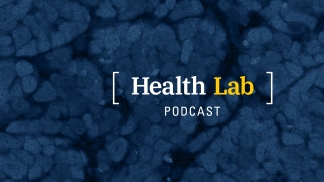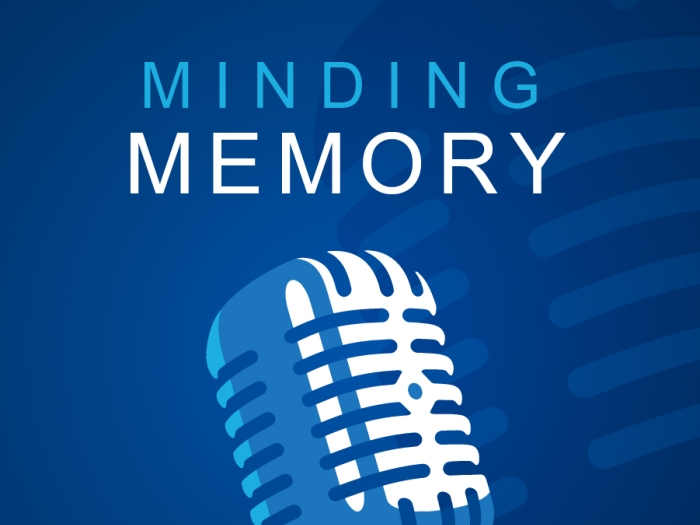Research hints at how fungus farming ants keep their gardens healthy
Findings show that the insects sniff out diseased fungus by detecting certain chemicals.
Transcript
Host:
Welcome to Health Lab, your destination for news and stories about the future of healthcare. Today: How Ants Weed Their Underground Fungus Gardens - Research hints at how fungus farming ants keep their gardens healthy. Findings show that the insects sniff out diseased fungus by detecting certain chemicals.
The adage "weed early and often" is shared as key to a productive garden.
Interestingly, certain species of ants are also avid gardeners, a practice they’ve refined over 50 million years. They too weed their underground fungus gardens, but how they know what to weed out has been a mystery.
Now, a multidisciplinary team of scientists report in the Proceedings of the National Academy of Sciences how ants distinguish the good fungus from the bad.
People rely on sight to identify weeds, but ants grow fungus underground in the dark and must have other ways to sense undesirable garden denizens.
A team led by Jonathan Klassen, Ph.D., at the University of Connecticut and Marcy Balunas, Ph.D., at the University of Michigan, has found that the ants sniff out diseased fungus by detecting chemicals called peptaibols.
To determine this, the team focused on the ant species Trachymyrmex septentrionalis whose habitat follows the pine barren ecosystem from Long Island all the way south to East Texas.
Trachymyrmex ants grow their fungus below ground and feed it fresh organic detritus.
The fungus acts almost like an external gut for the ant colony; the fungus grows up and around the fresh food laid on top of it in honeycomb shapes, produces digested food for the ants as it grows, and then secretes waste.
Katie Kyle, a graduate student in Klassen’s lab, and co-first author on the paper, experimentally infected ant nests with Trichoderma, a naturally occurring, disease-causing fungus that infects the ants’ gardens and found that the ants began working overtime to remove the infection from the nests, increasing their waste output.
Over the winter, while the ants were dormant, the team analyzed the fungal biomes of several different ant nests collected from different locations and found Trichoderma in all of them.
Co-first author Sara Puckett, Ph.D., a recent graduate from the Balunas’ UConn lab, prepared extracts of Trichoderma containing the organic compounds of the fungus to determine if the weeding was triggered by one or more of these compounds or simply by the presence of the pathogen’s cells.
“We were curious to see if the ants were weeding because of compounds produced by the infecting fungus,” Balunas said.
The team found the Trichoderma extract, when applied to the fungus garden, sent the ants into frenzied weeding activity just as actual Trichoderma infections had.
Working with scientists from University of California, San Diego and University of North Carolina, Greensboro, they discovered the nests contained peptaibols, a family of compounds known to be produced by Trichoderma.
However, finding which specific peptaibols were causing ant weeding proved more challenging since these extracts contained many compounds.
The researchers tested pure peptaibols, including two new compounds called trichokindins VIII and IX. It turned out that all the peptaibols tested caused some level of ant weeding, a finding that implies it may not be one particular peptaibol but rather that the whole suite of peptaibols can induce the ants to weed their garden.
“This suite of Trichoderma compounds inducing ant behavior is in contrast to many other natural products whose activity can often be attributed to one compound,” Balunas said.
Although their data support peptaibols as a signal to weed, it’s not clear what exactly the ants are perceiving. It may be that the invading Trichoderma fungus produces the peptaibols and the ants detect them and then weed, note the researchers. Or perhaps the ants are detecting a secondary response from the fungus garden itself.
The next step is to figure out those details of ant-fungus communication, Klassen says.
“Maybe the fungus is signaling ‘I’m sick’. Maybe the fungus is detecting the peptaibols. We need to flesh out the chain of signaling,” Klassen said.
The findings highlight one of the few known systems where an animal responds to a disease of its beneficial symbiotic partner instead of a disease of their own body, a phenomenon that Balunas and Klassen are calling an extended defense response, and one that they look forward to continuing to tease apart.
For more on this story and others like it, visit michiganmedicine.org/health-lab. Health Lab is a part of the Michigan Medicine Podcast Network, and is produced by the Michigan Medicine Department of Communication. You can subscribe to Health Lab wherever you listen to podcasts.

Listen to more Health Lab podcasts - a part of the Michigan Medicine Podcast Network.





